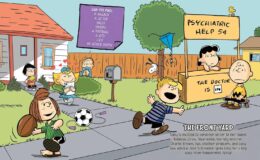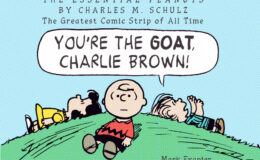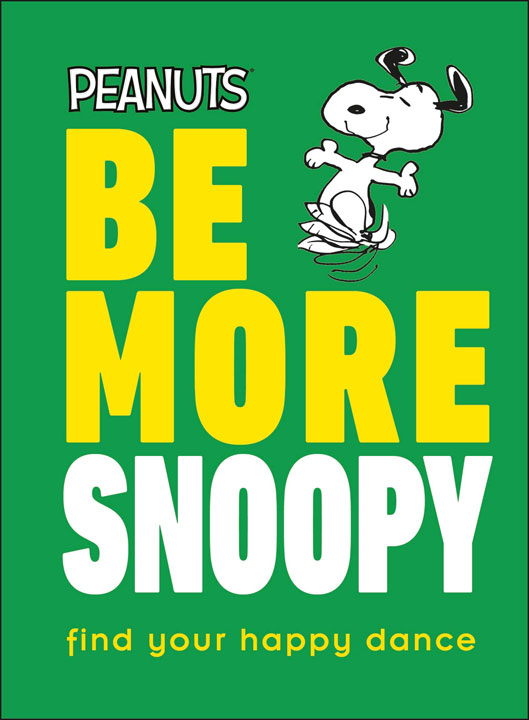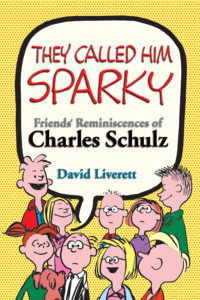Review: A Charlie Brown Religion
- By : Nat
- Category : New releases, Reviews
I’m doing something here that I’ve long avoided doing on this blog, and that’s discussing my religious background and beliefs. This is not a comfortable thing for me, for I know that I am out of step with a large portion of my readership, and I don’t know how some of you will react (most of you will be fine, I expect). However, while it would not normally be relevant to the things I post here, I don’t think this review could be judged honestly without this information as context.
I’m an atheist. I was raised as a Jew, and I still adhere to some subset of the ceremonies (a very small set; I light the Hannukah candles, but not the Shabbos candles; I shun pork, but have no qualms about cheeseburgers), but that’s just to maintain some connection to my heritage, and it doesn’t reflect any belief. I do not find myself driven by emotion nor by logic to believe in some form of supernatural, sentient, controlling being. It’s just not in me. Now put that information on the shelf; if it’s at all important, it’s important in the latter part of the review.
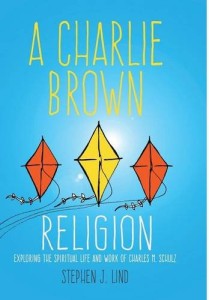 A Charlie Brown Religion, written by Stephen Lind, is a vital contribution to the understanding of Schulz. This is a look at Schulz’s beliefs, his worship, his studies, and how these things influenced and were communicated through Peanuts. While many (not all) of the individual pieces of information that were in here could be found previously, they were scattered hither and yon, and were not in position to paint the fuller picture. This has allowed individual slices of what was known to be used in painting Schulz as everything from an ultraconservative Evangelical Christian to an avowed atheist, and while in truth Schulz’s religious path was a journey and did not stay solidly anchored in one place, neither of those statuses appear to have ever been true. A clearer picture allows for a better understanding of the man and his work.
A Charlie Brown Religion, written by Stephen Lind, is a vital contribution to the understanding of Schulz. This is a look at Schulz’s beliefs, his worship, his studies, and how these things influenced and were communicated through Peanuts. While many (not all) of the individual pieces of information that were in here could be found previously, they were scattered hither and yon, and were not in position to paint the fuller picture. This has allowed individual slices of what was known to be used in painting Schulz as everything from an ultraconservative Evangelical Christian to an avowed atheist, and while in truth Schulz’s religious path was a journey and did not stay solidly anchored in one place, neither of those statuses appear to have ever been true. A clearer picture allows for a better understanding of the man and his work.
Lind has put in the work. He has delved deeply into the religious path that Schulz took, from his Lutheran background to his getting involved in The Church of God (the Anderson, Indiana-based sect, not to be confused with other, very different Christian groups of the same name). He has also gone through the work, the way Peanuts is used even when it’s not been by Schulz’s direct hand, showing how the strip’s characters are used to depict religion. In doing so, he knocks down many of the assumptions that have been placed on Schulz by people viewing the world through their own lenses. Schulz was (generally) a conservative and (always) a Christian, which leads to some confusion as he was neither a conservative Christian (i.e., his beliefs about the path of righteousness was not that it was narrow and required a specific fierce creed), nor was he a Christian conservative (i.e., his political beliefs did not seem to primarily spring from – nor be voiced in terms of – his Christianity.)
The book goes into copious detail – at times, too copious. When you’re dealing with historical matters that occurred largely out of the public eye, where you often won’t have the exact details you want, it can be tempting to a writer to take the details you have and present them as if they have importance. (Believe me, I’ve done it myself.) The reader ends up with more details about the layout of some rooms where Schulz worshipped than are really needed to meet any real goal of the book. But if one is going to err (and everyone is) it is perhaps better to err in that direction than in the other. The book doesn’t have so much of this that it becomes a problem to wade through.
The book is very good at taking you through the various ways in which Schulz’s church life grew and fluxed. Most of the book is very good at talking about how he expressed his belief, how he would see the need for a wider form of acceptance of belief than believing that one set of Christian beliefs is so right that all others are improper… but for most of its run, it’s not so good at talking about what Schulz actually believed, how he viewed the divine, mankind’s relationship with G-d and vice versa. For an example that simultaneously illustrates and trivializes what I’m saying: he notes that Schulz liked to ask people whether they thought Jesus had a dog, which is really a great way of getting to the question of how human was Jesus. But he never tells us whether Schulz believed that Jesus had a dog. To some degree this makes sense, as Schulz’s belief was internal and subject to his own questioning, and while he did do some proselytizing, he seemed more interested in discussion than in statement. There may be few flat statements on the ground to represent his specific beliefs, and one wouldn’t want to misrepresent him.
It isn’t until more than halfway through the book that I really think we get to hearing some specifics on what Schulz believed… and it’s in what I think is the most problematic chapter. Chapter 8 is titled “Secular Humanist”, and it addresses the times that Schulz used that phrase to describe himself and some of his beliefs. There are a few smaller places in the book where I felt that the author had his thumb on the scale in the discussion, but it was both most blatant and most important here. Lind comes from a strongly Christian background, which I should note is not covered in the book, and this is a book from a university press rather than a Christian publishing house, where it might be assumed. I don’t expect Lind was purposely trying to tilt his narrative, but simply that he was seeing things from a very specific perspective that, despite his best attempts, sometimes kept him from realizing that it was not a neutral point of view. Lind puts effort into denying that Schulz was actually a secular humanist, but in doing so, he’s not relying on what secular humanism actually means, and instead seems to ground his discussion on the descriptions of folks like Jerry Falwell, who sought to demonize secular humanism. “Secular humanism” is not synonymous with “atheism” (although many secular humanists are atheists); it merely means a belief that an appropriate set of ethics can be derived without depending on a belief in a higher being. That doesn’t mean that a higher being doesn’t exist and doesn’t also want to steer humans toward being “good” by some definition. It’s definitely at odds with many forms of Christianity or other religions which hold that the only route to goodness is through correct knowledge of G-d, and that in fact knowledge of and obeisance too G-d is a key part in being moral, but it is not inherently at odds with being religious. Lind does cite Schulz as feeling that some nonbeliever friends were also conspicuously good men; that’s very much in line with the secular humanistic stance that Schulz professed to have.
Lind has taken the effort to tally all the religious references in Peanuts, and that is one place where his religious grounding likely comes in handy, giving him better chance to detect references that might have flown past those of us who have less background in that realm. (It may have also caused some false positives; it’s hard to say without seeing all his individual calls, which are not presented and would’ve made the book far more of an academics-only book than the readable piece it is. But even when you can recognize the religious reference, it can be hard to weight intent; it seems clear that in some strips Schulz had a message, but in others the religious content may just be linked to a source of simple humor, coming from a man for whom religion was major in his life and not inherently separate from the comedy of day to day existence.
The book has dozens of illustrations, photographs as well as strips – including not only the Peanuts strips, but also the Warner Press work that I reprinted in my (now, alas, out of print) book Schulz’s Youth. (In fact, the panels that appear in this book are reproduced from Schulz’s Youth, rather than from earlier sources; the lettering on the strips is the computer lettering that I set using a Schulz font.)
All in all, this is a book that fills a hole that I’ve long felt was left in the literature about Schulz. Though not a perfect book, it is very good and quite worthwhile, and is likely to end up being the best book we’ll ever have on this particular topic. Recommended.
This book is currently available in both print and Kindle editions from Amazon.com.
